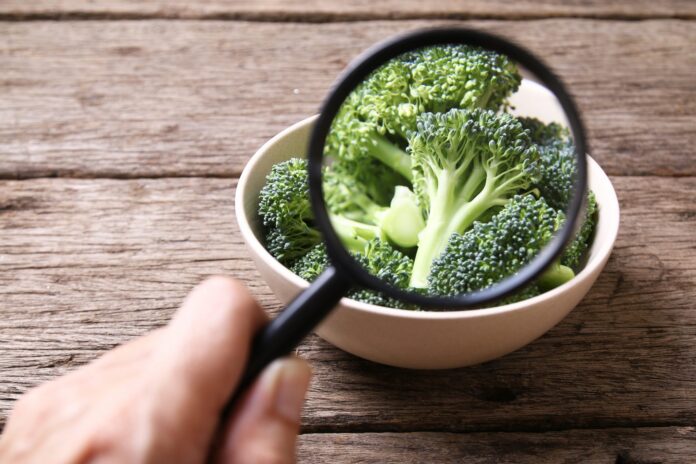AUBURN UNIVERSITY, Ala. – When people think of myths, they think of creatures such as Big Foot or the Loch Ness monster. However, there are several myths that may be living right in the home kitchen. Over the years, many myths surrounding food safety have been adopted as facts. While there may be debates on whether Big Foot and Nessie are real, Alabama Extension professionals are here to expose these food safety myths as frauds.
Alice Moore, an Alabama Extension food safety and quality regional agent, said foodborne illnesses are common, yet preventable when proper steps are taken.
“The CDC estimates that one in six Americans get sick from contaminated foods or beverages,” Moore said. “Using the proper techniques, such as hand washing and cooking food to the correct temperature, can help people prevent these illnesses.”
10 food safety myths
The following are 10 of the most popular home food safety myths:
Rinsing chicken removes bacteria
One of the most popular food safety myths is that rinsing chicken with water will remove bacteria such as Salmonella. Moore said this could not be further from the truth.
“Rinsing chicken will not only fail to remove bacteria, it will also spread raw juices around the sink, onto counter tops and onto ready-to-eat foods,” Moore said. “Bacteria in raw meat and poultry can only be killed when cooked to a safe minimum internal temperature, which is 165°F for poultry.”
Raw cookie dough and cake batter are safe to eat
Contrary to the belief of many, raw cookie dough and cake batter should not be consumed. These items could contain germs that cause illness. Whether it’s prepackaged or homemade, the heat from baking is required to kill germs that might be in the raw ingredients.
Cross contamination doesn’t happen in refrigerators
One myth is that cross contamination doesn’t happen in refrigerators because it is too cold for the germs to survive. In reality, Moore said some bacteria can survive, and even grow, in cool, moist environments.
“Always keep fresh fruits and vegetables separate from raw meat, poultry, seafood and eggs,” she said. “Also, clean the refrigerator regularly with hot water and soap, including the refrigerator walls and undersides of shelves.”
Produce bins don’t need to be cleaned
People may believe that because they only put fruit and vegetables in the produce bin, that it doesn’t need cleaning. However, there are some naturally occurring bacteria in fresh fruits and vegetables that can cause cross contamination.
“A recent study revealed that the refrigerator produce compartment was one of the places in the kitchen with the most germs,” Moore said.
To prevent the buildup of bacteria, clean the produce bin and other bins in the refrigerator often with hot water and soap. Rinse the bins thoroughly after washing. Dry them with a clean cloth towel or allow them to air dry outside of the refrigerator.
Leftovers are safe to eat until they smell
Smell is NOT an indication of whether food is safe to eat. The types of bacteria that cause foodborne illnesses do not affect the taste, smell or appearance of food. People should either freeze or discard refrigerated leftovers within three to four days, even if they smell and look fine.
Melons don’t need to be cleaned
Because people only eat the inside of the melon, many think that the outside doesn’t need to be cleaned. Even though people don’t ingest the rind, there are many ways for pathogens to contaminate the edible portion.
“A knife or peeler passing through the rind can carry pathogens from the outside into the flesh of the melon,” Moore said. “Before cutting, rinse the melon under running tap water while rubbing by hand or scrubbing with a clean brush.”
Food poisoning is not an issue when eating a vegetarian diet
Even when eating a vegetarian diet, people can get food poisoning. Fruits and vegetables may carry a risk of foodborne illness, just like any other food. Always rinse produce under running tap water. This includes the fruits and vegetables with skins and rinds that people do not eat. Never use detergent or bleach to wash fresh produce.
Freezing food kills illness-causing bacteria
Despite popular belief, bacteria can survive freezing temperatures. Freezing is not a method of killing bacteria. When frozen food is thawed, bacteria can still be present and may begin to multiply. The best way to kill harmful bacteria is by cooking the food to the proper internal temperature.
Hamburgers are cooked when the middle is brown
People cannot rely on visual cues to determine whether food has been cooked to a safe internal temperature. The ONLY way to know that food has been cooked is by using a food thermometer. Ground meat should be cooked to a minimum internal temperature of 160°F.
Microwaving food makes it automatically safe to eat
The heat from microwave ovens will kill the bacteria in foods when heated to a safe internal temperature. However, do not assume that the food is automatically safe to eat.
“Foods can cook unevenly in microwave ovens because they may be shaped irregularly or vary in thickness,” Moore said. “Even microwave ovens that have a turntable can cook food unevenly. This may leave cold spots in the food, where harmful bacteria can survive.”
Follow all package instructions, rotating and stirring foods during the cooking process, if the instructions call for it. Also, check the temperature of microwaved foods with a food thermometer in several spots.
More information
For more information on proper food safety techniques and procedures, visit the Food Safety section of the Alabama Extension website at www.aces.edu/go/foodsafety. The food safety and quality regional agent serving each county is also available by phone or email. Find contact information for each agent in the Alabama Extension personnel directory.





















